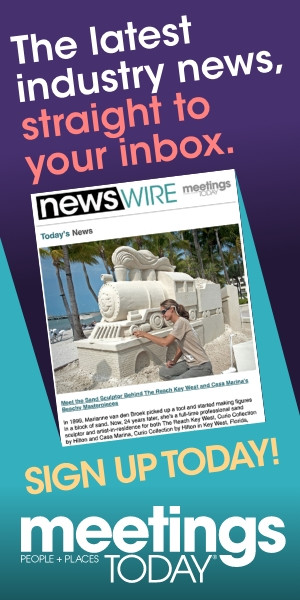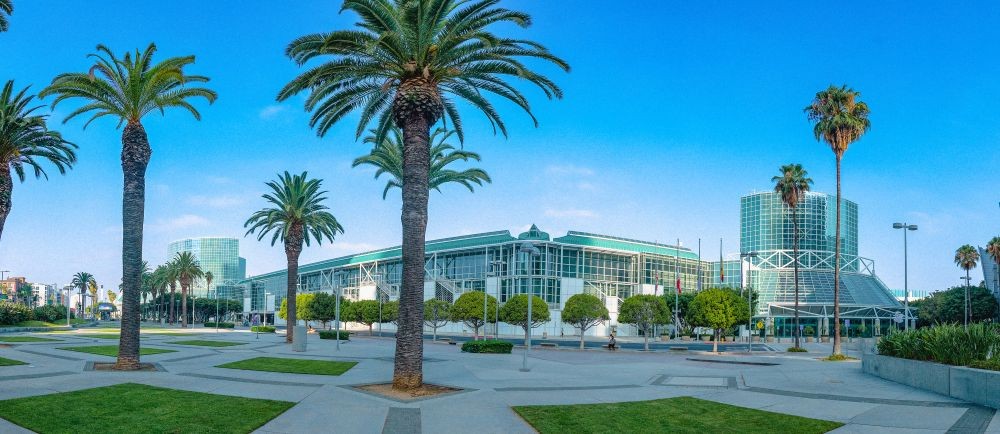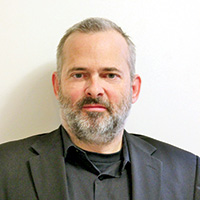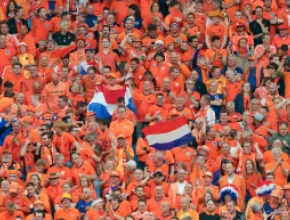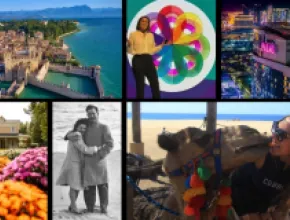Last month, Earvin “Magic” Johnson kicked off the 2025 ASAE Annual Meeting & Exposition at the Los Angeles Convention Center as the opening keynote speaker.
When asked by an audience member about key leadership qualities, the Los Angeles Laker legend and business entrepreneur replied, “Be yourself and believe in your strategy. Being a leader is understanding your team, but don’t change.”
[Related: Major Issues Lurk in the Background of a Successful 2025 ASAE Annual Meeting]

Those sage words well describe the approach of other leaders attending the four-day show, including Adam Burke, president and CEO of Los Angeles Tourism & Convention Board. Since assuming the role in 2020, Burke, who joined the bureau in 2016 as chief operating officer, has steered the city’s tourism industry back on course following the pandemic.
Having started out with a trial by fire in 2020, Burke commenced his fifth full year in charge faced by another crisis, the January wildfires. As Los Angeles Tourism Board Chairman Alan Rothenberg had noted when announcing Burke’s selection as CEO, “we have the utmost confidence in his expertise and abilities to lead our industry’s recovery journey,” and Burke again led the way forward, sticking to and believing in the bureau’s core purpose and strategy.
“With over 540,000 Angelenos working in the tourism sector and more than 1,000 local businesses relying on our industry for their livelihoods, travelers continuing to visit our City of Angels for leisure, business, and meetings and conventions has never been more critical,” stated Burke last January. “In moments like these, tourism does more than drive our economy—it becomes a lifeline in supporting our community’s recovery.”
Since then, he has also refocused attention on the unprecedented run of mega events that will elevate L.A. and its meetings industry to new heights of global recognition.
[Related: Timeless Venues Reminiscent of Yesteryear Los Angeles]
Championship Caliber
Attracting 5,082 attendees, including 2,725 association professionals and 1,972 exhibitors, and surpassing its revenue goals, ASAE 2025 sent its own reassuring message about the strength of Los Angeles as a group destination.
“This is truly the Super Bowl of meetings, and we’ve demonstrated that through the partnership with L.A.,” stated ASAE President and CEO Michelle Mason of the event.
Fittingly, L.A. is hosting Super Bowl LXI in 2027. Returning to SoFi Stadium for the second time this decade following its 2022 debut at the multipurpose venue, it will be the ninth time that Los Angeles County has welcomed the big game, starting with Super Bowl I in 1967 at the L.A. Memorial Coliseum.
Opened in 1923 as a living memorial to L.A. veterans of World War I, the 77,500-capacity Coliseum marks another major milestone in 2028 when L.A. hosts the Olympic and Paralympic Games.
[Related: Live From ASAE: L.A. Tourism Chief Doane Liu Shares Meetings Haps in the City of Angels]
Home of University of Southern California football since 1923, Coliseum was center stage for L.A.’s first Olympics in 1932. Sharing opening and closing ceremonies plus competitive events with SoFi Stadium, “The Greatest Stadium in the World” will be the first venue to host three Olympics in 2028. Los Angeles joins Paris and London as the third city in history—and first in the U.S.—to host the games a record three times. SoFi Stadium will host the largest swimming venue in Olympic history with 38,000 seats.
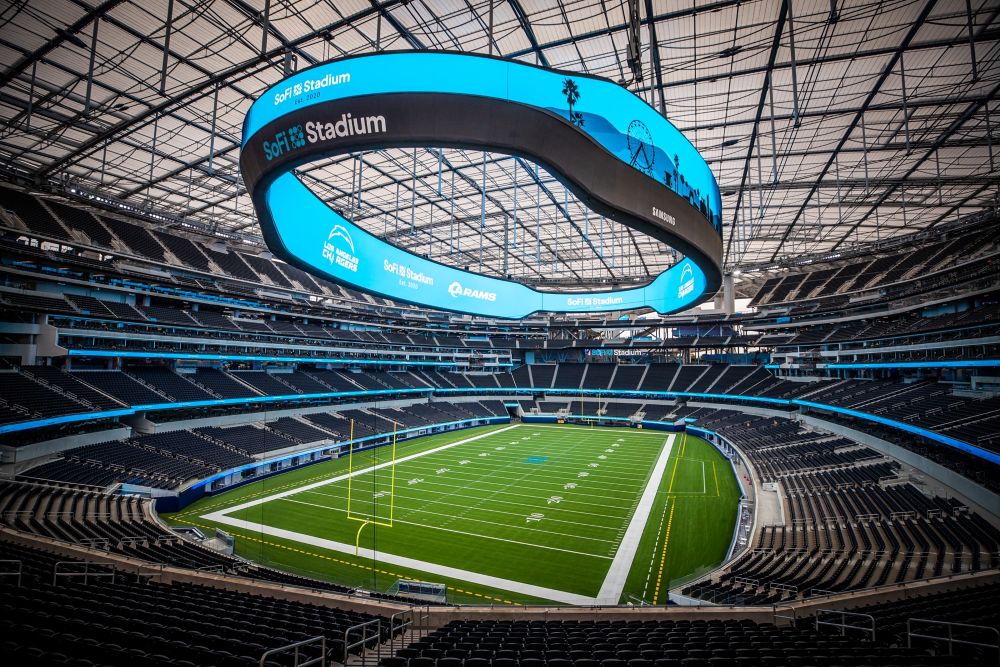
Home to 11 professional sports teams, the most in the nation, L.A.’s rich sporting heritage includes soccer. L.A. hosted the 1994 FIFA World Cup final followed by the 1999 FIFA Women’s World Cup final, both at another iconic institution, the Rose Bowl in Pasadena.
Next year, the World Cup comes to North America in its first-ever tri-national edition, jointly hosted by the U.S., Canada, and Mexico. L.A. is among 16 U.S. host cities, with eight contests at SoFi Stadium including U.S. Men’s National Team’s opening match, two rounds of 32 knockout matches and one quarter-final.
The road to LA28 includes the 2026 NBA All-Star Game at the Inuit Dome, the futuristic new home of the L.A. Clippers. Next year also sees the 81st U.S. Women’s Open, a premier championship in women’s professional golf, at the historic 1926 Riviera Country Club in Pacific Palisades.
It’s a full house ahead and not without challenges, including possible date and space limitations for major conventions and tradeshows next year.
The City of Angels is no stranger to Olympic-size obstacles though—and leaders that have stepped up with winning strategic solutions.
Moving People and People Movers
Relocating from Maine to L.A. in 1890, William May Garland formed a real estate company which significantly contributed to the growth and development of the city at the turn of the century. In 1923, one year after joining the International Olympic Committee, Garland secured the 1932 Summer Olympics for Los Angeles. It took some effort and persuasion. According to an August 2025 L.A. Times article, when Garland had asked Olympic officials what it would take to get the games to his city, their response was, “Where is Los Angeles?”
The same article recounted the headaches that then “little-known travel executive” Peter Ueberroth faced when leading the effort to bring the games to L.A. in 1984. These included “traffic nightmares, cost overruns, lifestyle disruptions in a city that abhors such things” and the “high-stakes international turmoil” of conflict with the Soviet Union.
Both the 1932 and 1984 games were successful and profitable, and expectations are no less for 2028. Burke also set the record straight at ASAE 2025 regarding media-hyped misperception of citywide wildfire damage. Citing recent Visit California sentiment research that found that the average American traveler believed that 41% of the region had been damaged by the fires, he explained that “the actual number is less than 2%” and further, “that not one piece of the visitor experience had been directly impacted.”
That visitor experience will look very different as generational infrastructure projects like the $30 billion modernization of Los Angeles International Airport (LAX), including the new Automated People Mover train that will provide time-certain access to terminals, parking, pickup and drop-off curbs, the new LAX Consolidated Rent-A-Car facility and LA Metro’s expanding light rail system, near completion.
Aimed at elevating L.A.’s global competitiveness, the proposed billion-dollar modernization of the Los Angeles Convention Center, which accounts for one-third of the $25 billion in total economic impact from meetings and events in L.A., is moving ahead, with an upcoming vote from Los Angeles City Council and targeted completion by 2029.
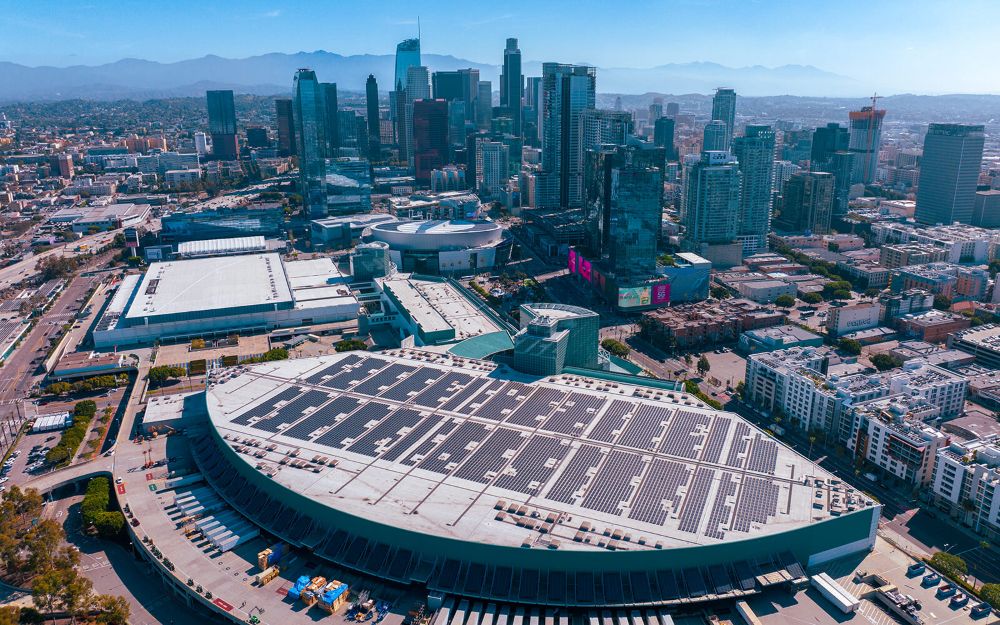
“There has never been a more exciting moment to book a meeting or event in Los Angeles,” Burke said. “With the global spotlight intensifying as L.A. prepares to host some of the world’s most iconic sporting events, Angelenos and visitors, including meeting planners and attendees, will benefit from these transformative infrastructure investments, which also include the debut of world-class cultural landmarks such as the Lucas Museum of Narrative Art and the David Geffen Galleries at LACMA.”
He added that, “Los Angeles isn’t just prepared to welcome the world. It is reimagining what meetings and events can be, with unmatched access, new attractions, global momentum and ‘only-in-L.A.’ experiences that planners won’t find anywhere else.”
Connection
Read More California Destination Content


